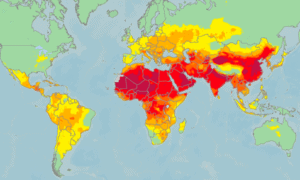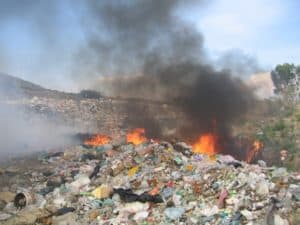An unintended consequence of globalization and the spread of industrialization, air pollution has become the leading environmental cause of death globally and fifth among all causes of death, including smoking, diet, and high blood pressure. The 2017 State of Global Air report found that air pollution was responsible for 4.2 million deaths worldwide in 2015. Just over half of the deaths attributed to long-term exposure to air pollution were reported in China and India alone, two major destinations for business travelers and tourists. These substantial numbers leave no ambiguity surrounding the critical need to place air pollution among other widely recognized disease factors (e.g. smoking and diet).

Air pollution comes from various sources and can take many forms, and sustained exposure can pose significant health risks. Once inhaled, toxic pollutants make their way from the lungs into the bloodstream. The health effects of air pollution are surprisingly similar to those connected with smoking tobacco; both have been linked to cardiac disease, respiratory disease, and cancer.
In the industrialized world, the use of coal-fired power plants and the ever-increasing number of gas and diesel cars on the road are the leading causes of outdoor pollution. However, outdoor pollution is not only caused by fossil fuels. In fact, in the developing world, the burning of garbage and irresponsible agricultural practices are the main contributors.

In parts of Africa and Asia, air pollution is a chronic problem and a very serious health hazard year-round. These high-exposure regions contain some of the world’s largest and most densely populated cities, including New Delhi, Beijing, and Dhaka. More and more frequently, cities across China and India are being enveloped by dense clouds of smog. However, the World Health Organization (WHO) warns that these incidents are not necessarily what pose the greatest risk to the local populous. When the thick clouds of smog roll in, the local government is inclined to issue warnings, and citizens are more likely to take proactive measures to limit their exposure. The greatest threat is long-term exposure to ambient air pollution, which often goes unnoticed.
While air pollution is worst in Africa and Asia, the United States is far from immune from its effects. The American Lung Association’s 2017 “State of the Air” report found that 125 million Americans – 39% of the population – are exposed to unsafe levels of air pollution annually. The report does include good news however. The overall trend in the United States indicates air pollution levels are decreasing, despite an increase in the overall population and energy use. This development lends credibility to America’s ongoing efforts to improve air quality.
Ideally, the pollution problem will be tackled at the national level; however, state and local governments can still take measures to reduce air pollution. For instance, increased access to public transport reduces the number of cars on the road, thus cutting pollution levels. Some local governments have gone so far as to enact their own air pollution standards that are more stringent than those established by the federal government. Even a local initiative that only produces a moderate reduction in pollution levels can have a significant impact and potentially save thousands of lives. Harvard University scientists conducted a study of more than 60 million American senior citizens which linked an increased risk of premature death to exposure to ozone and fine particular matter. The study concluded that a federal reduction of just 1 microgram per cubic meter nationwide would save 12,000 lives every year, and lowering the ozone pollution by 1 part per billion would save an additional 1,900 lives annually.

The WHO recently launched the “Breathe Life” campaign to educate the public on air pollution and encourage data sharing among countries to better assess pollutant levels. This campaign has created a monitoring solution that will alert residents when the air pollution levels in their city exceed WHO guidelines. These alerts will advise people when it is necessary to take extra precautions and will prove especially valuable when there are no visible signs of heightened exposure. Additionally, the WHO hopes that the data obtained from such a monitoring system will compel governments to take proactive steps to improve air quality.
Increasing public awareness of air quality and disease contributions caused by air pollution is the first and most important step in reducing air pollution and improving public health. And of course, the best solution is to limit exposure to pollution by eliminating the sources; however, this is not always possible. Yifang Zhu of the UCLA Fielding School of Public Health advises people – especially the elderly, children and people with existing health conditions – in areas experiencing elevated levels of air pollution to take practical steps to protect themselves. Exercise should be avoided during the hottest parts of the day, as that is when air pollution is at its worst. If an alert is issued for especially high levels, people should do their best to remain in a well-ventilated indoor area. When outside, avoid heavy traffic areas and be aware of sources of pollution that may be upwind. Travelers and expatriates in heavily-affected areas should consult with their physician to identify appropriate precautions based on their medical history.
